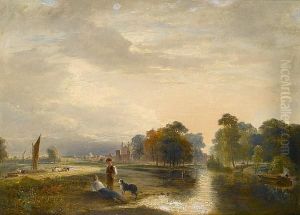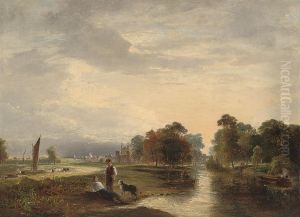William Ingalton Paintings
William Ingalton was an English artist, engraver, and publisher, known primarily for his architectural drawings and engravings of churches and other significant buildings. Born in Eton, Berkshire, in 1794, Ingalton developed an interest in architectural art at an early age, likely influenced by the rich history and architectural heritage of his hometown.
Ingalton's work often captured the Gothic and Classical architecture that was prevalent during his time. He was particularly skilled at rendering detailed illustrations of building facades, interiors, and ornamental details. His engravings served both as works of art and as documentary evidence of architectural styles and structures, some of which have since been altered or no longer exist.
Throughout his career, Ingalton collaborated with other artists and authors, contributing illustrations to various books and periodicals focused on architectural and archaeological subjects. His works were appreciated for their accuracy and attention to detail, and they were often used by historians and architects as references.
In addition to his engravings, Ingalton also wrote about architecture. He published a number of pamphlets and short works on the history and architecture of Eton College and its chapel, sharing his knowledge and passion for the local landmarks.
William Ingalton's contribution to the documentation of British architectural history is recognized by historians and collectors of engravings. His works provide valuable insights into the architectural landscape of England during the 19th century. Ingalton died in 1866, leaving behind a legacy of detailed architectural illustrations that continue to be studied and admired.

